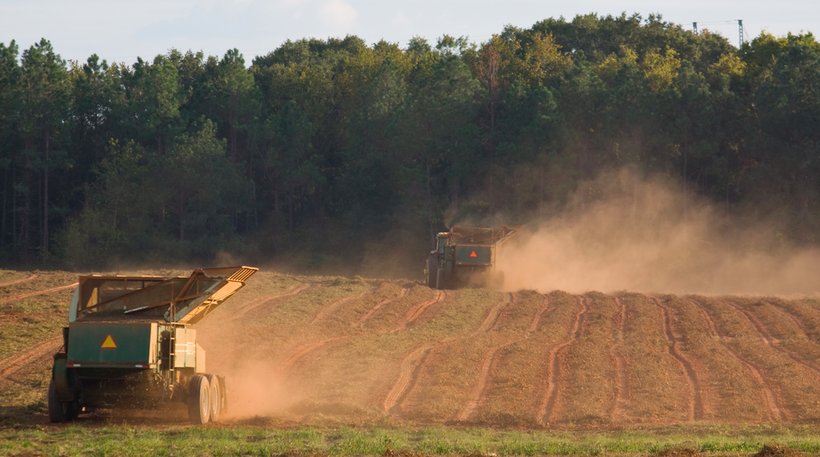
DOTHAN, Ala. — Peanut fans (not the Charlie Brown variety) better be hungry, because there’s about to be a lot more peanuts out there with nowhere to go.
According to a white paper released last month by the National Center for Peanut Competitiveness, Alabama and other peanut-producing states are expected to produce more peanuts in 2016 than ever before. Farmers are expected to produce 1.44 million tons of peanuts by August 1, and the country doesn’t have enough warehouse space to hold that volume.
The National Center for Peanut Competitiveness explained the rise of peanut production: “Given that cotton does not have a commodity program and only relied on crop insurance for its safety net, the recent and forecasted extremely low cotton prices coupled with the other commodities’ low prices has forced Southern farmers to look towards peanuts as the safety net for their farming operations. These factors led to an increased 2015 peanut production, which has created an expected excess supply of peanut for 2016.”
In Alabama alone last year, peanut farmers harvested 400 million pounds of peanuts (about 14% of the expected gross for 2016), which were valued at $118 million. Peanuts in Alabama are grown on 189,000 acres of farmland.
Alabama is in the center of peanut-production country. About half of all the peanuts grown in the United States are grown within a 100-mile radius of Dothan, Alabama, which is also home to the Alabama Peanut Producers Association. The radius around Dothan includes much of Georgia as well. If Alabama, Georgia, and the rest of the South produces the expected amount of peanuts this year, the region is looking at 627,000 more tons of peanuts than warehouses can hold.
Warehouse storage space is important to peanut farmers for monetary reasons as well. If farmers store their product in approved warehouses or on-farm facilities, they can apply for marketing assistance loans, which help farmers distribute and sell their peanuts when the market is more favorable.
Of course, the peanut is historically very special to Alabama. George Washington Carver discovered his many uses for the peanut while teaching at the Tuskegee Institute in Tuskegee, Alabama. Carver’s discoveries brought him and Tuskegee into the national spotlight.
Don’t miss out! Subscribe today to have Alabama’s leading headlines delivered to your inbox.